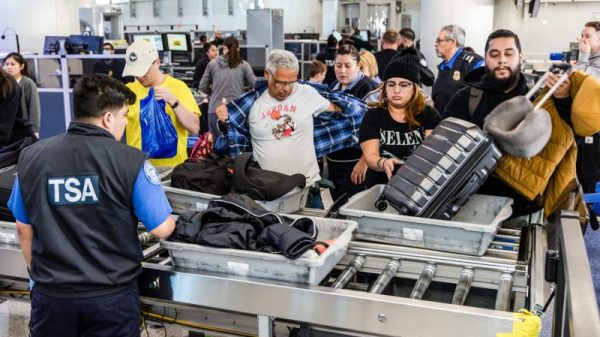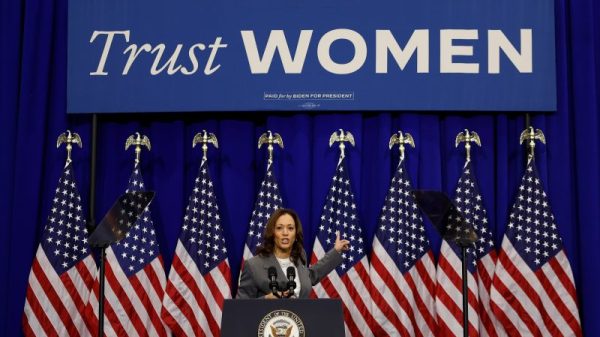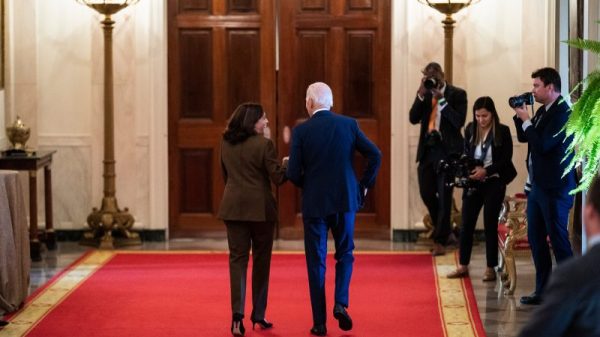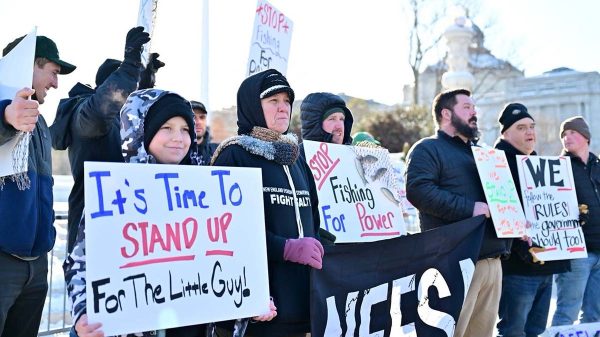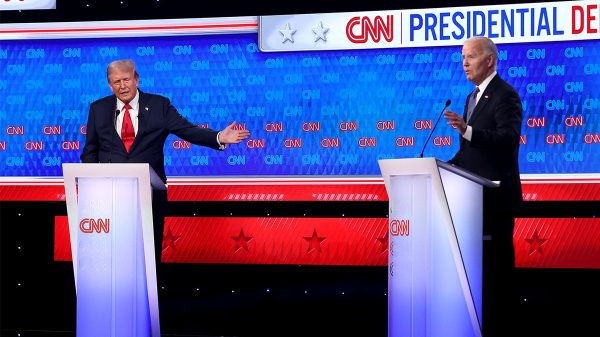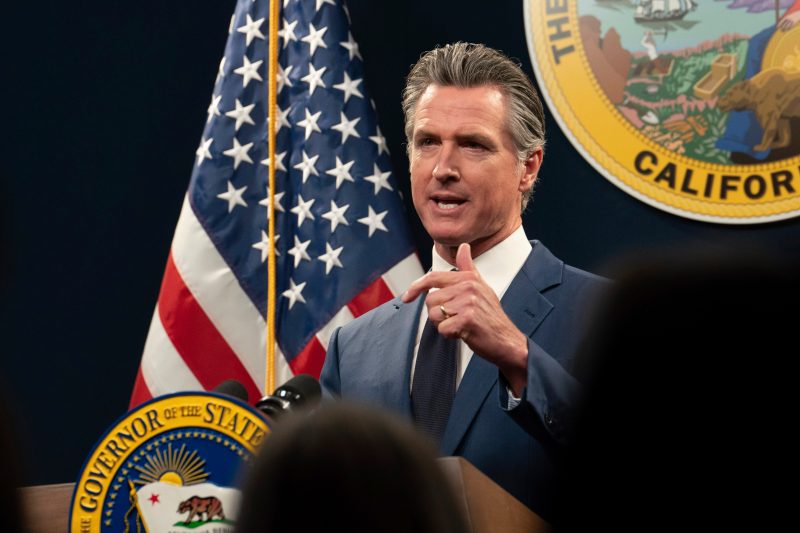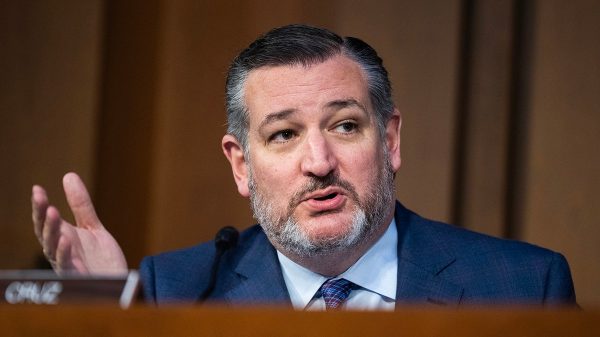Two years ago, California was so flush that Gov. Gavin Newsom was moved to make a bold declaration about the state’s estimated $100 billion budget surplus.
“Simply without precedent,” the Democratic leader said, announcing the good news in May 2022. “No other state in American history has ever experienced a surplus as large as this.”
In those heady days, the state’s record-setting surfeit of cash seemed like a resounding endorsement of the California way, bolstering Newsom’s rising national profile and presidential bona fides.
But fast-forward to 2024 and the situation has swung wildly in the opposite direction: The state — still the wealthiest and most populous in the nation — is facing a nearly $50 billion budget shortfall in the coming fiscal year, testing its commitment to the increasingly liberal agenda advanced in recent years.
The crunch is forcing Newsom, seen as a top 2028 presidential candidate, to declare a statewide fiscal emergency, dip into rainy-day reserves and make painful cuts that could put him at odds with staunch allies and temper the ambition of his most sweeping policy goals as he seeks to address pressing problems like homelessness and affordability.
It’s too soon to tell how the budget crisis will affect Newsom’s standing beyond California, but in a state poll early this year, just 46 percent of voters approved of his performance, while half of the electorate said the deficit was “extremely serious.” With his second and final term ending after 2026, this year’s budget cycle presented Newsom a key chance to bolster his record before a possible White House bid.
In announcing their weekend agreement to balance the state’s books and pass a nearly $300 billion budget, Newsom and his fellow Democratic leaders sought to frame the compromise as a fiscally responsible approach that preserves many popular social programs and includes safeguards in case of future financial troubles.
“This agreement sets the state on a path for long-term fiscal stability — addressing the current shortfall and strengthening budget resilience down the road,” Newsom said in a statement Saturday.
Critics, however, say the budget wounds were self-inflicted, blaming the deficit on Democrats’ mismanagement and predicting that their agenda will hurt not only the state’s finances but Newsom’s chances on the national stage.
“It continues to suggest that the California progressive dream — the California way — isn’t such a great model of governance,” said Rob Stutzman, a GOP strategist based in the state. “It makes it hard to imagine why a California governor would be elected beyond California.”
Democrats, meanwhile, say the shortfall was due in part to an unprecedented set of circumstances: Crucial state revenue from personal income and capital gains taxes became difficult to predict amid the stock market surges and slumps of recent pandemic-pocked years. And the massive winter storms in early 2023 prompted officials to extend tax filing deadlines, disguising the scale of the problem.
California is still dealing with the fallout today.
State Sen. Mike McGuire, the chamber’s highest ranking Democrat and one of the main budget negotiators, acknowledged that “this is a tough budget year,” but said even with the gap, the state was able to blunt the impact on spending for education, wildfire prevention, homeless housing assistance and other top priorities.
The deal is the result of weeks of intense — and at times acrimonious — negotiations between Newsom, lawmakers, labor unions and other interest groups, exposing points of intraparty tension in the sapphire-blue state, where Republicans don’t wield enough power to influence deliberations. The agreement will now go to the full legislature, which will vote on it this week before the budget takes effect July 1.
To make up the $46.8 billion deficit, Democrats plan to reduce spending by $16 billion, with the largest savings stemming from departmental belt-tightening, elimination of vacant state positions and cuts to affordable housing programs and prison budgets. Along with other financial maneuvering, Newsom will declare a “budget emergency,” allowing the state to pull $12 billion from its reserves over the next two fiscal years.
The agreement also calls for suspending tax breaks for businesses earlier than initially planned and delaying a minimum-wage increase for health-care workers until at least the fall. Unions representing health-care workers fought against changes to the wage hike schedule, but in the end cheered the deal as the best result of a bad situation
“Of course workers are disappointed” about the delay, said Dave Regan, president of SEIU United Healthcare Workers West, an influential political base for Democrats. But, he said, the budget locked in later raises, ensuring that “in future years workers will be able to count on the wage increases agreed upon without doubt, delay or further debate.”
Newsom’s initial proposal to close the deficit included deeper cuts to social services and drew sharp criticism from the left. Those suggested cuts, announced last month, undermined Newsom’s liberal campaign promises, said Scott Graves, the budget director at the California Budget and Policy Center, a Sacramento-based think tank that advocates for policies to address inequality in the state.
“There is a clear disconnect between the governor’s stated values — his vision of ‘A California for all’ — and the actual proposals he has made in his May revision,” Graves said.
Many, including Graves, called on Newsom and state leaders to save money by closing additional prisons, rather than reducing the social safety net. There are about 15,000 empty prison beds across the system, and shuttering five facilities could save $1 billion, according to the state’s nonpartisan Legislative Analyst’s Office.
“It’s a no-brainer,” Graves said. “Why are we spending a billion dollars a year to keep 15,000 beds empty in our state prison system? It’s a massive waste of resources.”
The eventual agreement did not include sweeping prison closures, but does make much larger cuts to the state correctional budget than Newsom originally proposed, allowing leaders to stave off some other unpopular trims.
Several groups that opposed Newsom’s early plan announced support for this weekend’s compromise, including the association that represents California’s 58 counties and health care consumer advocates, expressing relief that the cuts were not as bad as they first feared and not as damaging as those made after the Great Recession.
But even with all the recent bonhomie, some see troubling signs of further fiscal instability. The state has increased spending by more than 60 percent over the last five years, said Lee E. Ohanian, an economics professor at the University of California at Los Angeles. And on several high-profile issues — especially housing and homelessness — Californians have seen little gain from the spree, he said.
In April, for example, a statewide audit found that California has failed to track the effectiveness of some of its largest homelessness programs, meaning leaders have allocated $24 billion to tackle the crisis over the last five fiscal years and aren’t sure how well it’s working.
“We’re paying the price for this very grandiose vision for the state, which lacked accountability and oversight and we’re left holding the bag,” Ohanian said. “Now the party is over, we’re cleaning up the kitchen and we’re realizing these problems that have been in place for many years have gotten worse.”
Newsom and lawmakers sought to address some of the systemic challenges to the state’s budgeting in their agreement, planning for two fiscal years instead of one and setting aside more reserves to replenish the rainy day fund. They will also explore a policy change that would prevent the state from spending projected surpluses before the money lands in government coffers.
While the state’s budget challenges provide grist for critics of California’s leadership, they also open up a potential political lane for Newsom, allowing him to say — possibly during a future presidential run — that he stood up to pressure from his own party and made some difficult financial decisions.
Newsom is fond of pointing out the unprecedented sums that California has devoted to solving a given problem, said Stutzman, the GOP strategist, but if the governor can convince Americans that he helped his state become more fiscally responsible, “there’s a narrative there,” he said.
“He has the opportunity to grab that mantle,” Stutzman said. “That could be the whipped cream on this dirt pie.”






